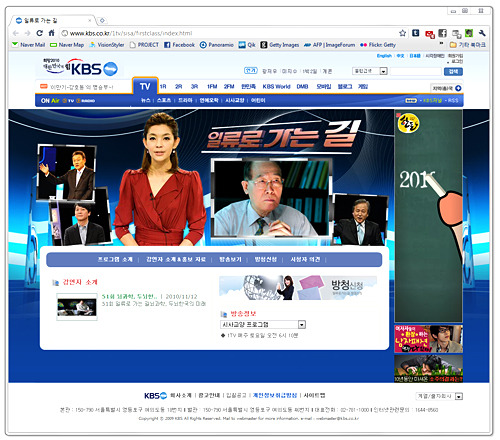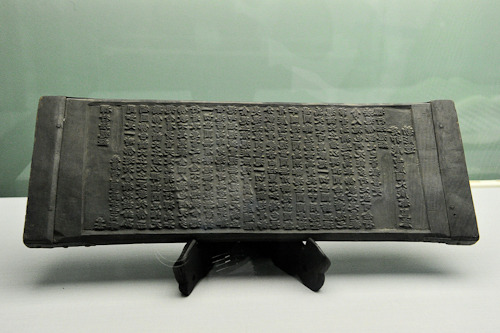| ||
|
Read more...
| ||
|
By Cathy Rose A. Garcia, Kwon Mee-yoo Prominent women leaders may have come from different backgrounds and countries, but their success stories of breaking the glass ceiling are serving to inspire a new generation of young women leaders. Former U.S. Secretary of State Condoleezza Rice, former New Zealand Prime Minister Jenny Shipley and other successful women shared anecdotes from their own experiences in male-dominated fields, and advice on how to become women leaders, at the Global Women’s Leadership Conference. ``I know personally how difficult it is to be a woman in a male dominated field... But we should not fall prey to that argument that we should see a woman like you in a field in order to succeed in it. But if there are no women role models, then find another role model anyway,’’ Rice said, during the panel discussion. Rice, who as a young girl wanted to become a concert pianist, advised women to ``to find something you love to do if you’re going to be good at it.’’ For Rice, it was international politics, and she encouraged women to work hard and find good mentors that will help them advance. Parents also play a key role in changing the societal perceptions of women as leaders. Shipley, who was New Zealand’s first female prime minister, said her father, a Presbyterian minister, dared her to believe that anything was possible. ``Unless the conversations at home change, nothing will change. It’s not only what we say to daughters, but also what we say to our sons ... Breaking cultural cliches and allowing them to believe they can be anything they want to be, if we say that to young children, self-belief develops. Break the cultural mold in sons, so they expect their sisters to be as successful as they are,’’ Shipley said. During the Q&A discussion, an audience member asked how women should change a male-dominated working culture in Korea. ``I do think you can change the environment by being confident and by insisting the conversation is carried out in a particular way and decorum and don’t give in to the prevailing way people deal with each other,’’ Rice said. Shipley said most sexist people are merely bullies, who are doing it to provoke a reaction from women. ``Sometimes, it’s better to ignore it but later, go and tell them to stop, and if it happens again, deal with it with your colleagues ... I encourage women to recognize bullying and pick fights that you need to,’’ she said. Governments also play a crucial role in the development of women leadership and increasing gender equality. Kate Sweetman, co-author of ``The Leadership Code,'' cited the successful example in Norway, which ranks second in the WEF Gender Gap Index, where the government encourages men to take more paternity leave to share in the duty of childrearing and allow women to work more. ``Norway’s studies found if they give incentives for men to stay home with the babies and women to come back to work earlier, they find men bond more with the children and they want to stay home and allow women to work more. They get more gender equality in the workplace and at home. Children are also happier spending more time with dads,’’ Sweetman said. Seoul is exerting serious efforts to integrate women-friendly policies, as Mayor Oh Se-hoon introduced the capital’s plans during a special dinner at the conference, Monday evening. ``Seoul has been promoting various women-friendly policies based on the belief that a city where women are happy is a city where all men and human beings are happy,” Oh said. Cho Eun-hee, the vice mayor who was formerly in charge of the "Women-Friendly Seoul" project, said the city is trying to reflect females’ viewpoint and experiences in every single policy. She showed a photo of a woman's high heel stuck in a gap of a sidewalk, eliciting laughter from the audience. ``The project started with applying women's experiences of not wanting their high heels stuck in cracks of pavements, to the city’s policies,’’ Cho said. One of major project of Seoul's women-friendly policies is job creation for females, especially for those who have their careers affected by their family affairs. The project won the 2010 United Nation's Public Service Award in June. cathy@koreatimes.co.kr meeyoo@koreatimes.co.kr | |
| cathy@koreatimes.co.kr |
| ||||||||||||||||||||||||||||||||||||||||||||||||||||||||||||||||||||||||||||||||||||||||||||||||||||||||||||||||||||||||||||||||||||||||||||||||||||||||||||||||||||||||||||||||||||||||||||||||||||||||||||||||||||||||||||||||||||||||||||||||||||||||||||||||||||
2010/11/29 10:35 |


By Park Si-soo Seoul City will recruit 40 interns among the foreign students studying here, by Dec. 6, as part of its global internship program. Successful applicants will be assigned to diverse departments to work for five weeks starting on Jan. 7. They will work for six hours from 9 a.m. to 3 p.m. on weekdays and receive 30,000 won for each day of work. Seoul City has run the internship program since 2008. So far a total of 140 students from 30 countries have completed the program that was launched to extend the city’s global network. “This program is very important for the city to get ideas to make Seoul a more global city,” said Oh Seung-hwan, a Seoul City official in charge of the program. The recruitment started from Monday. For more information, visit seoul.go.kr or global.seoul.go.kr. |
|

| Jung crowned Miss Korea 2010 | |||||
Jung So-ra, a 19-year-old university student, was crowned Miss Korea 2010 on Sunday.
Jung, who currently is enrolled at the University of California, Riverside, said that she wants to be a diplomat. She speaks English, Chinese and Japanese aside from her native Korean.
She has admirable qualities including her multilingual ability, but her father is now in the spotlight, as well. Her father, Jung Han-young, is CEO of Humantech China and chairman of Korean Chamber of Commerce in Shanghai, according to local reports. The father of Miss Korea of 2010 is a well-known figure among Korean immigrants in Shanghai, China, not only for his outstanding position in the local business community, but for his career that includes a stint as an actor in MBC, one of the three biggest TV stations here. The senior Jung was reportedly very proud of his daughter when she advanced to the second place in a preliminary stage, beating other competitors from Seoul. "My wife took good care of kids' physical appearance since they were very young. Also, my daughter, So-ra is a girl with lots of talents just like me," he was quoted as saying in an interview after the preliminary stage on July 6. However, Jung So-ra, the winner of the country's biggest beauty contest, does not have interest in entertainment, saying that she rather wants to engage in studying and volunteering, according to reports. | |||||